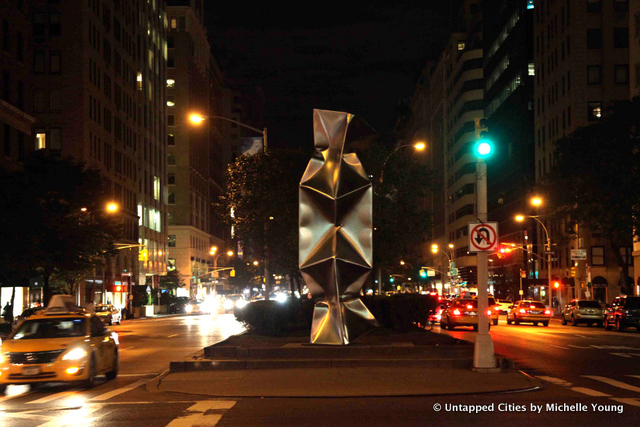
The temporary sculptures along the Park Avenue Mall are one of our favorite public art initiatives in New York City. The curated pieces, done by one featured artist at a time, always seem to be in a dialogue with the city around them. In the lower part of Park Avenue, north of Grand Central Terminal, the works form a distinct contrast with the corporate business culture that pervades the architecture. Further north, they serve to spice up the storied legacy of Park Avenue apartments.
On Saturday August 1st, Ewerdt Hilgemann, Moments in a Stream will be complete, stretching from 52nd to 67th Street. We’ve been hanging out with Hilgemann and his team while they install the sculptures between 10pm and 6am, as required by city regulation.
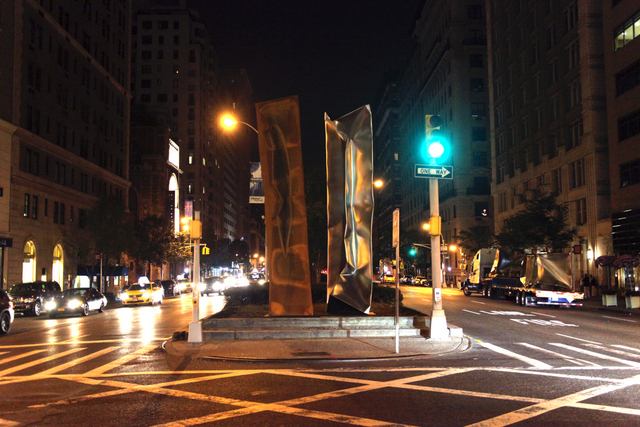 “The Dancers,” with the left sculpture made of Cor-Ten (or Weathering) Steel, akin to the material used by Richard Serra
“The Dancers,” with the left sculpture made of Cor-Ten (or Weathering) Steel, akin to the material used by Richard Serra
The stainless steel sculptures, which range from 8 to 20 feet, were formed in Amsterdam and transported to New York via shipping container. Hilgemann, who particularly reminded us to describe him as a “airsmith,” actually “implodes” the sculptures which begin as geometrically pure shapes like cubes and rectangular prisms using a special vacuum process that sucks out the air. You can watch a video of the process here.
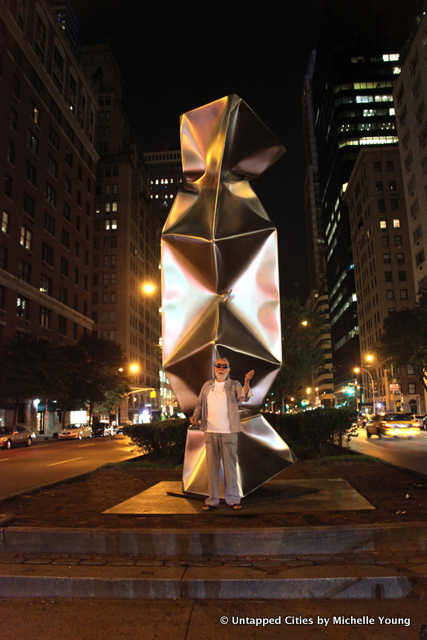 Ewerdt Hilgemann in front of his sculptures on Park Avenue
Ewerdt Hilgemann in front of his sculptures on Park Avenue
While on the surface the works may seem like they’ve been crunched from forces on the outside, as the doorman of the Ritz Apartments described to Hilgemann last night, it’s much more about the internal collapse–this process allows Hilgemann to control the shape of the finished product by manipulating the atmospheric pressure. Says Hilgemann, “To me the implosion represents the inward spiral of energy to reach the core and mystery of matter, the ultimate beauty of creation.”
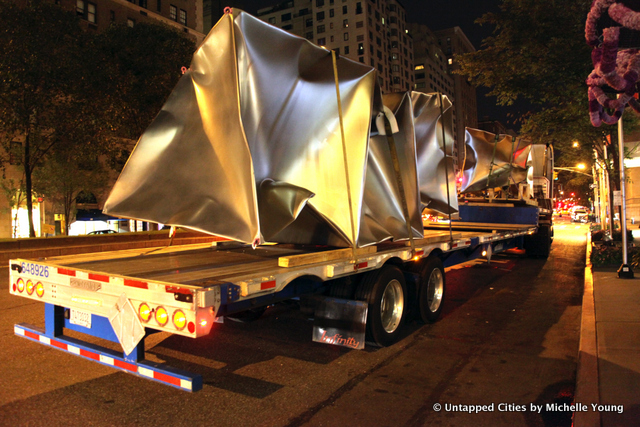
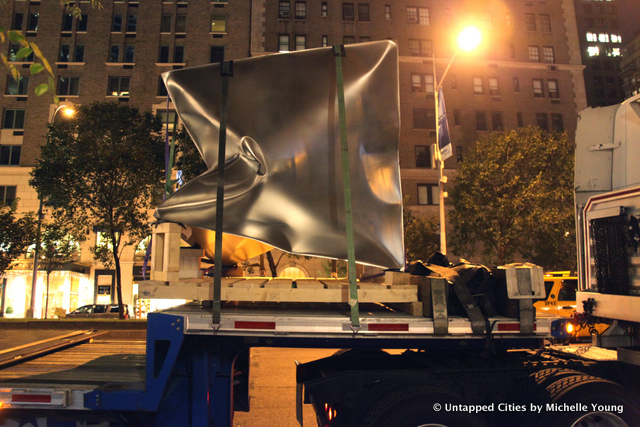
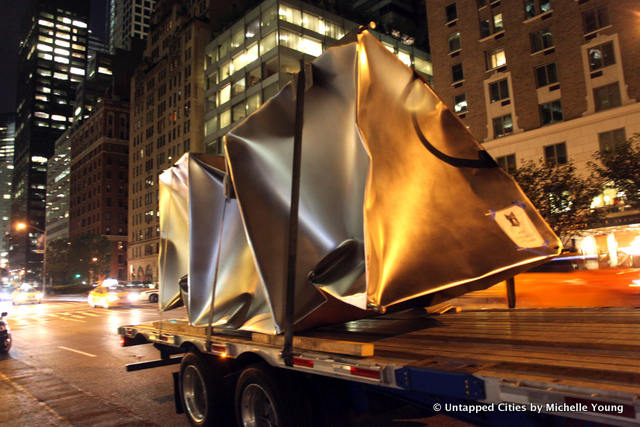
We asked Hilgemann about how the pieces communicate with New York and Park Avenue as a site and he spoke to formal factors as well as the less tangible . The stainless steel is polished to a satin gloss, allowing for the city to be reflected in the material like a mirror. At the top he says, you’ll see the blue sky. At the bottom, the grass of the Park Avenue Mall and the streets. Through reflection, Hilgemann plays with color, like a “seismograph” of the city he says.
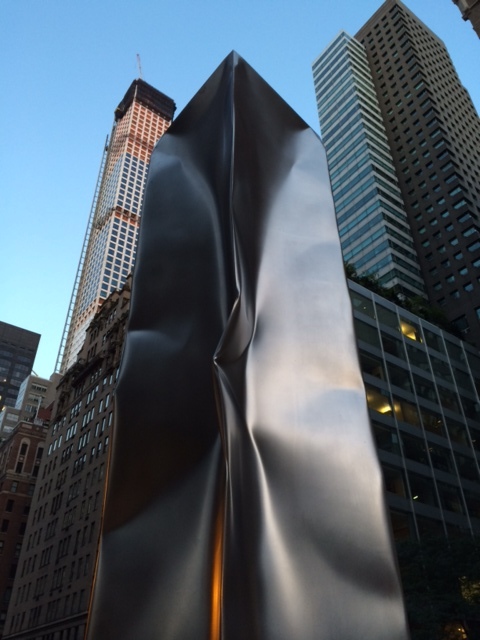 Image by Kai Hilgemann
Image by Kai Hilgemann
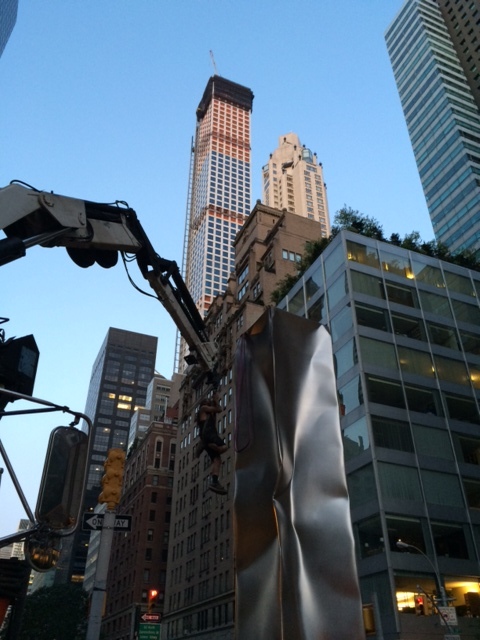
Image by Kai Hilgemann
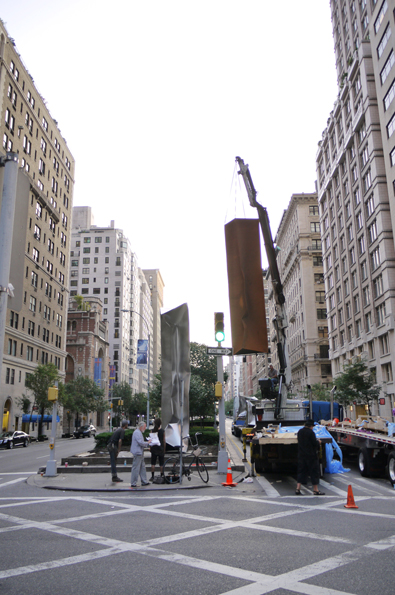
Image by Kai Hilgemann
Uniquely, he sees Park Avenue as a “very brutal avenue” and his work both a reflection of and a counterpoint to the architecture. It’s an industrial process of creation, but he really sees the human form in the finished product. There are faces, elements of the male, elements of the female, dancers, nature and other references Hilgemann drops when describing his work.
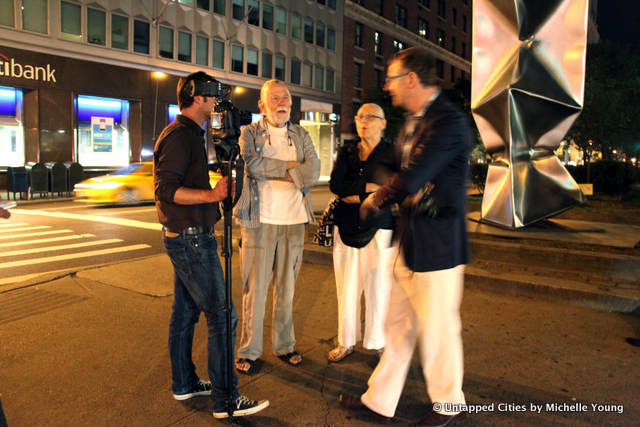 Hilgemann discussing the statues on Park Avenue with his team
Hilgemann discussing the statues on Park Avenue with his team
The entire process has taken four years, from the time Hilgemann received the commission from The Fund for Park Avenue to now. The installation in New York City, done in partnership with Serett Metalworks in Gowanus, Brooklyn, takes three nights. The gallery Magnan Metz also has an adjoining exhibition Freeze Frame with new works by Hilgemann.
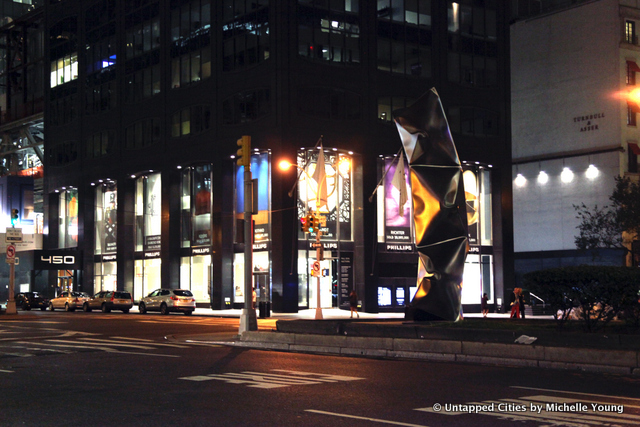
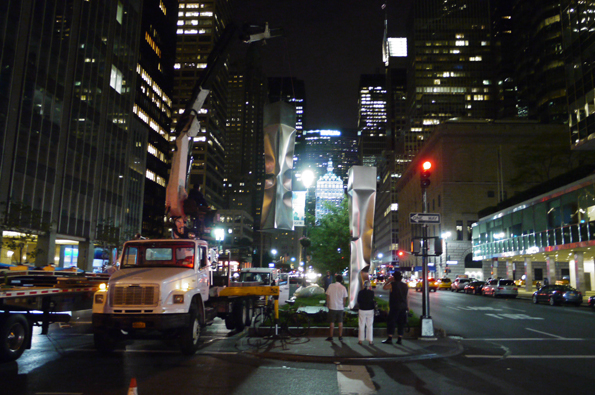 Image by Kai Hilgemann
Image by Kai Hilgemann
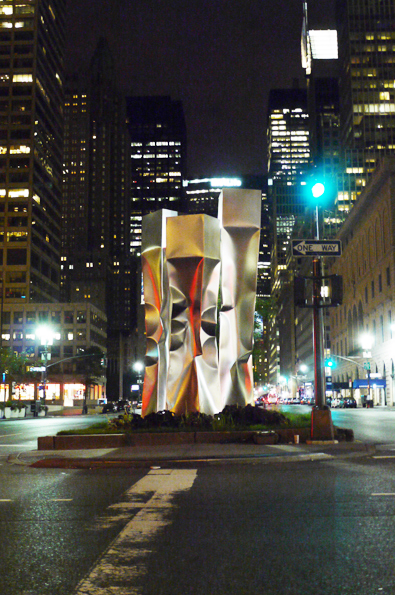 Image by Kai Hilgemann
Image by Kai Hilgemann
We asked Hilgemann which type of work he prefers, those for a museum or gallery, or those in the city. He says, now, at this stage of his career, he loves being outside amidst the cars and activity of the city. At least one of the pieces has already been sold to a collector who lives just next to some of the sculptures on Park Avenue but the exhibit on Park Avenue will be up until November. And the best way to check out these sculptures will be at Summer Streets, three Saturdays of a pedestrianized park Avenue which starts this Saturday.
Check out the last two sculpture installations on the Park Avenue Mall, projects of The Fund for Park Avenue: Park Avenue Paper Chase by Alice Aycock and the NYC skyscraper-inspired series on the Park Avenue Mallby Alexandre Arrechea.





